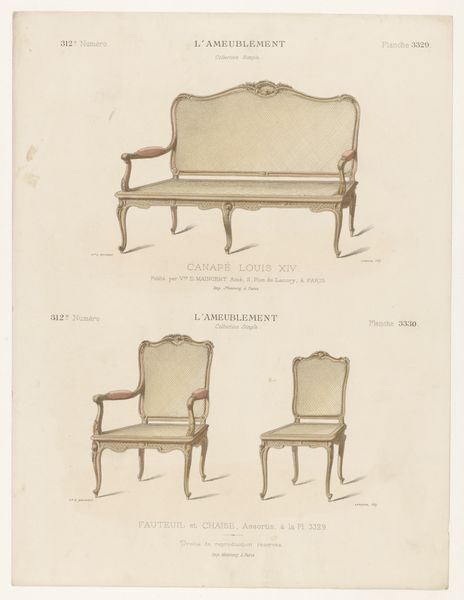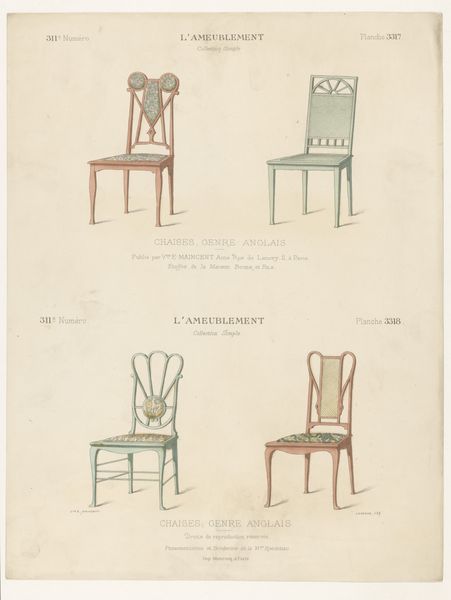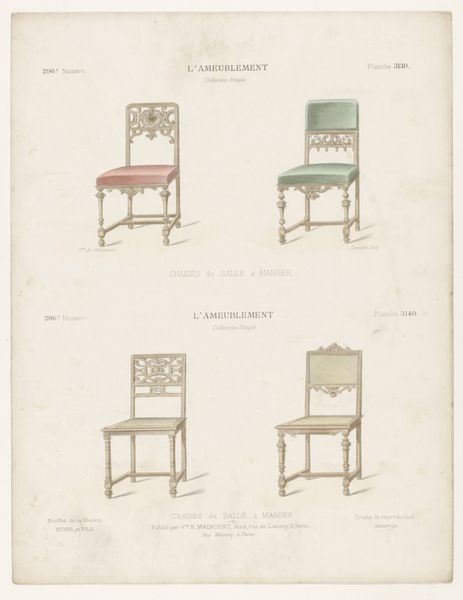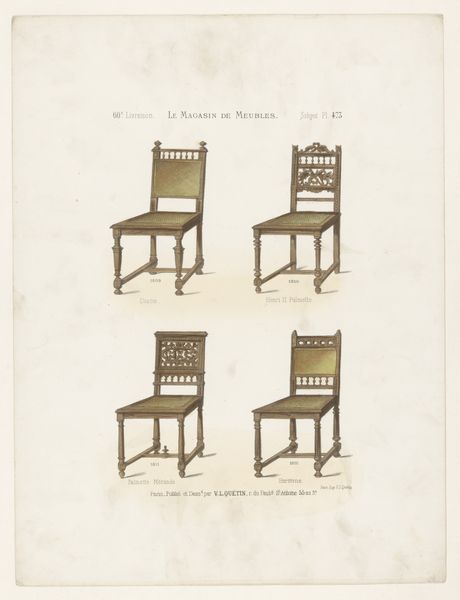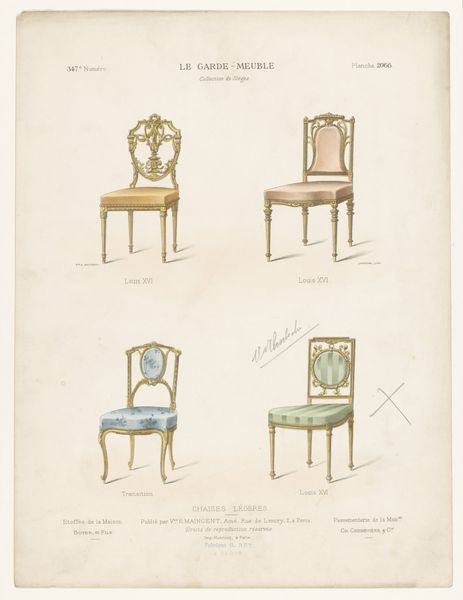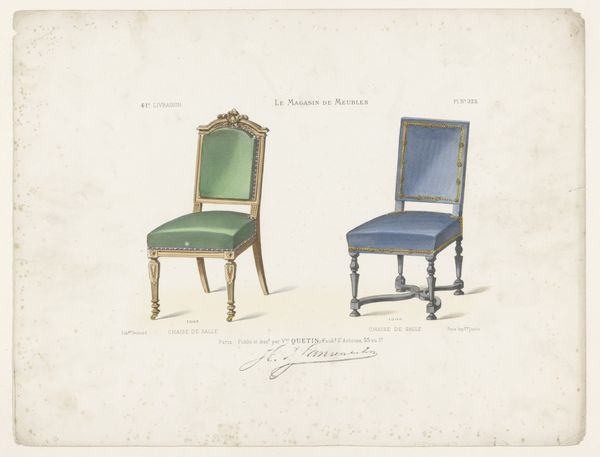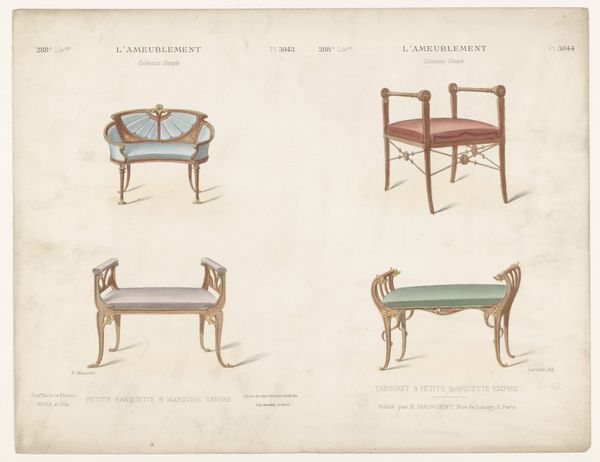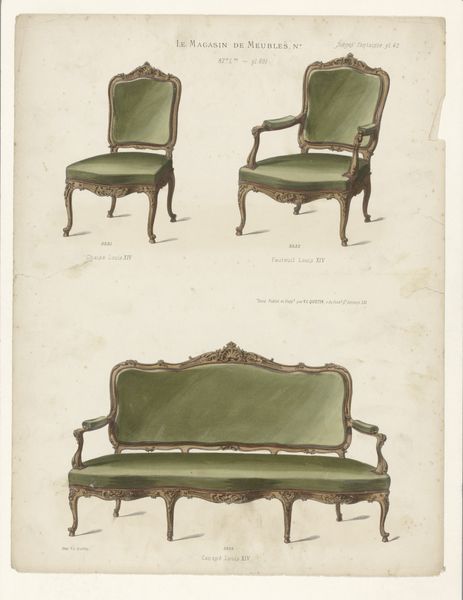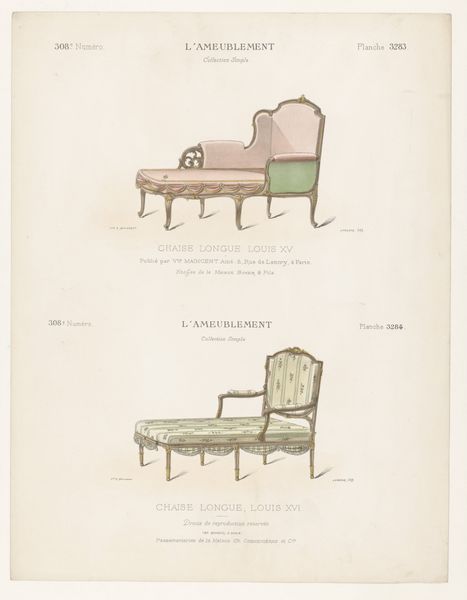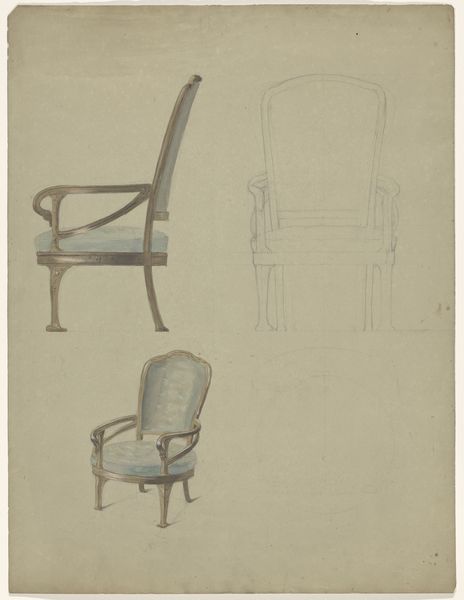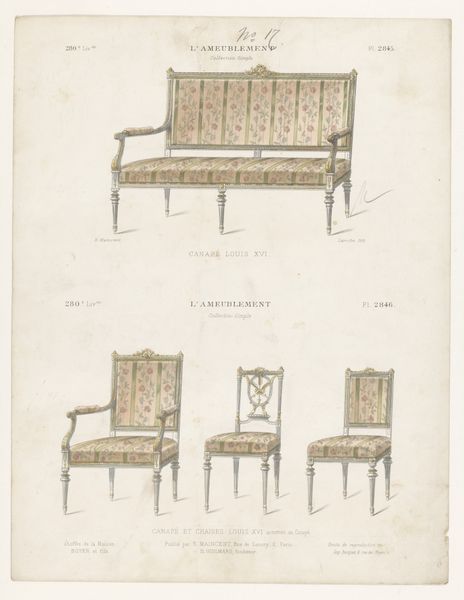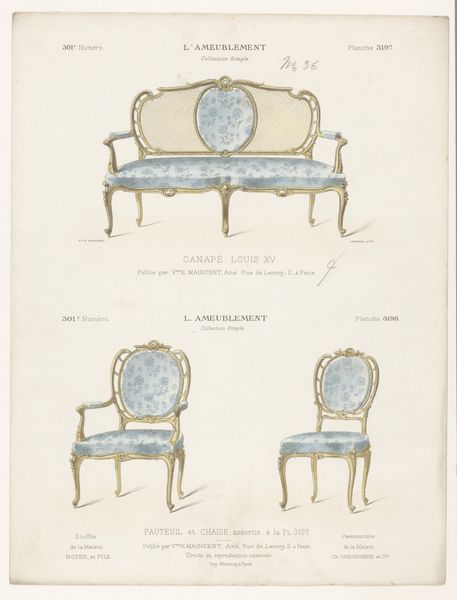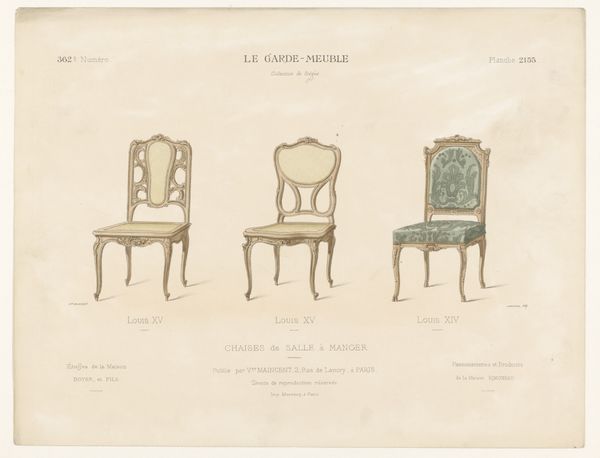
drawing, graphic-art, print
#
portrait
#
drawing
#
graphic-art
# print
#
decorative-art
#
watercolor
Dimensions: height 358 mm, width 275 mm
Copyright: Rijks Museum: Open Domain
Curator: This print showcases "Vier eetkamerstoelen," or Four Dining Chairs, designed by Léon Laroche, likely between 1885 and 1895. It’s rendered in watercolor. My first impression centers on their domesticity and a feeling of the Belle Époque. What are your immediate thoughts? Editor: I'm struck by the image's artificiality, really—its separation from any actual context of labor and consumption. It’s about ideal forms, meticulously depicted with watercolor. They are literally presented as blueprints. You only see them in their final presentation, as desired things to buy and consume. Curator: And yet, those forms resonate, don't they? Consider the wreaths and oval backrests. There’s a striving for classical motifs suggesting stability, heritage…ideas beyond the purely functional. They’re selling a lifestyle, an aspiration, alongside mere furniture. The classical signifiers offer this aspirational touchpoint to memory. Editor: I concede that symbolism plays a role, but the image still presents design divorced from craft—as if chairs emerge spontaneously rather than through woodworking and upholstery. We need to ask ourselves, who produces this material? And for whom is this ideal constructed? Curator: I see your point about that kind of design obscuring the labor process, yet isn't there a human element within its attempt at beauty? The details, the textures… I wonder about their impact on domestic rituals of the time. Editor: Of course. I merely see how a presentation of furniture through the mode of watercolor drawings normalizes the distance between manufacture, distribution, and the consumer. This method sanitizes this relationship by eliminating any reminders of these procedures. The symbols and designs reinforce hierarchies of taste as much as comfort or use. Curator: It is true that designs were more broadly accessible and desirable when disseminated in this format. Thinking about the impact, however, I find my sense for cultural and visual memory confirmed, just as I see that these pieces had long-lasting emotional value for individuals and society alike. Editor: It all serves as a poignant reminder that even the most "functional" art speaks volumes about values beyond practicality. Thank you.
Comments
No comments
Be the first to comment and join the conversation on the ultimate creative platform.
